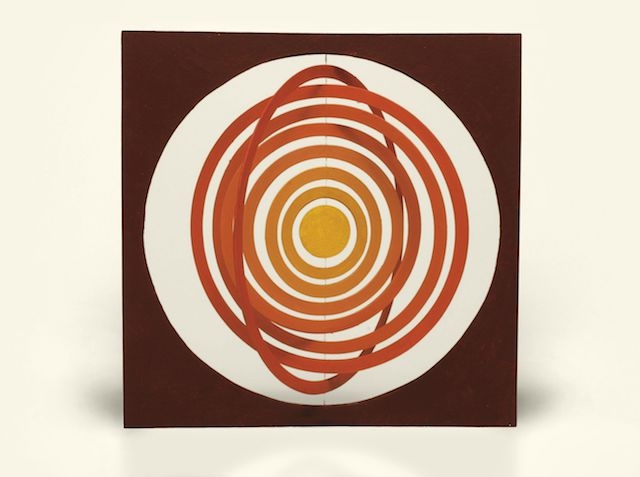‘The age of representational fiction in art has come to an end. Man is less and less sensitive to illusory images.’ The first lines of the Manifiesto invencionista (Inventionist Manifesto), signed by 16 members of the Buenos Aires faction of Concrete art in 1946, aspire to an art liberated from history, symbolism and banal attempts to represent. Yet however bold it might have been to pursue an art of pure form and colour, the lasting impression of this extensive presentation of Latin American Concrete and Neoconcrete art – over 80 works from 1934 to 76, drawn from the collection of Patricia Phelps de Cisneros – is how elegantly and inventively the works escape the lofty demands of the writing.
The Concrete art movement was from its outset full of charming contradictions, unanticipated paths and inventive interpretations. This is obvious from the start here, in the small, dark oil paintings on cardboard of Uruguayan Joaquín Torres-García. Including both ancient and contemporary signs of daily life in Montevideo in his works (the sun, water, fish; clocks, trains, cars), he fuses concrete and pre-Columbian traditions. With this exhibition, accordingly, the Moderna Museet shifts the balance of modernism away from the Paris–New York axis represented by its own collection, inviting the visitor into a much wider history of modernisms that follow different trajectories and speak other languages. Such has been a tendency within institutional curating for some years, but here this shift of perspective also rediscovers and makes visible existing connections within the museum’s canon. A small room with beautiful examples of Swedish Concrete art, by figures such as Otto G. Carlsund and Olle Baertling, underlines the intention to rediscover global networks of influence. Another example is Jesús Rafael Soto’s participation in Swedish art collector Pontus Hultén’s 1961 show Art in Motion at the Moderna Museet, which led to the Venezuelan artist’s inclusion in the museum’s collection. Two of his kinetic works, a cube, Kinetic Box (1955), and a wall work, Vibration avec forme noire (1959), playing with optical illusions created by the movement of the viewer, are vital inclusions.
For all its initial aspirations to universalism, the Concrete art movement diversified by moving through different cultural and political landscapes. The artistic exchange between Europe and Latin America could be described as a long-term effect of colonisation, as artists often had connections with their country of origin, as well as exile caused by war and political repression, with the European diaspora left in the wake of the Second World War as the obvious example. Concrete Matters shows several stunning reflections of this, such as the three-dimensional drawings made in steel and copper by the Hamburg-born Gego, a trained architect who as a student escaped from Nazi Germany to Venezuela.
The show also encompasses several important works from the Neoconcrete movement, formed in 1959 in Rio de Janeiro by artists such as Lygia Clark, Hélio Oiticica and Lygia Pape. These artists radically reinvented and invigorated the Concrete tradition by including the body and audience participation. Neoconcretism was an unorthodox brew of Concrete art, Maurice Merleau-Ponty’s phenomenology, Gestalt therapy, Brazilian samba and Cariocan street culture, fermented into an art vibrant with multisensory experiences. Here one of Clark’s rubber sculpturess evocatively draped over a plinth, appearing at once corporal and abstract. One of Oiticica’s cloaks, made to wear, is suspended from the ceiling, immobile on a wooden stick, but put into play in the neighbouring room in a film about the artist by Ivan Cardoso. The exiles, following the repressive political climate in Brazil, of artists like Oiticica and Clark connected Brazilian Neoconcrete art with the London, Paris and New York art scenes; Oiticica’s influential Tropicália installation at the Whitechapel Gallery in 1969 and Clark’s involvement with art as therapy in Paris in connection to the French school of psychoanalysis are examples of this. These meetings set in motion important ideas, such as participatory and relational aspects of sculpture and installation, that are still at work in the art of today.
Concrete Matters at Moderna Museet, Stockholm, 24 February – 13 May
From the May 2018 issue of ArtReview
